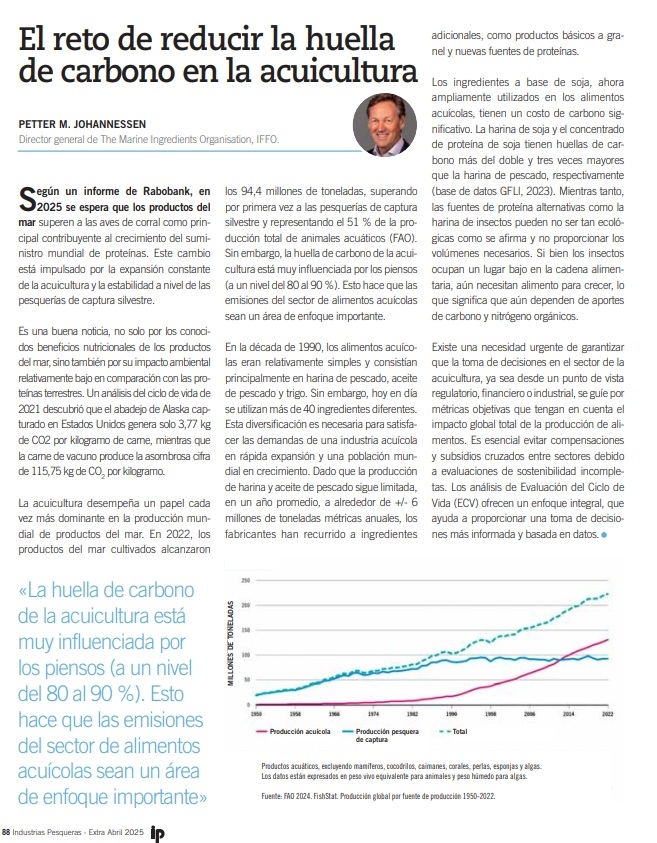This opinion piece was first published in Industrias Pesqueras, special edition of April 2025
1st April 2025
 In 2025, seafood is expected to surpass poultry as the leading contributor to global protein supply growth, according to a Rabobank report. This shift is driven by the steady expansion of aquaculture and stability at the level of wild-caught fisheries.
In 2025, seafood is expected to surpass poultry as the leading contributor to global protein supply growth, according to a Rabobank report. This shift is driven by the steady expansion of aquaculture and stability at the level of wild-caught fisheries.
This is good news—not only because of seafood’s well-known nutritional benefits but also its relatively low environmental impact compared to land-based proteins. A 2021 lifecycle analysis found that U.S.-caught Alaska pollock generates just 3.77 kg of CO2 per kilogram of meat, whereas beef produces a staggering 115.75 kg of CO2 per kilogramme.
Aquaculture is playing an increasingly dominant role in global seafood production. In 2022, farmed seafood reached 94.4 million tons, surpassing wild-caught fisheries for the first time and accounting for 51% of total aquatic animal production (FAO). However, aquaculture’s carbon footprint is heavily influenced by feed (at an 80 to 90% level). This makes emissions from the aquafeed sector an important area of focus.
In the 1990s, aquafeeds were relatively simple, consisting mainly of fishmeal, fish oil, and wheat. Today, however, over 40 different ingredients are used. This diversification is necessary to meet the demands of a rapidly expanding aquaculture industry and a growing global population. Since fishmeal and fish oil production remains capped, in an average year, at around +/- 6 million metric tons annually, manufacturers have turned to additional ingredients such as bulk commodities and novel protein sources.
Soy-based ingredients, now widely used in aquafeeds, come with a significant carbon cost. Soybean meal and soy protein concentrate have carbon footprints more than twice and three times that of fishmeal, respectively (GFLI database, 2023). Meanwhile, alternative protein sources like insect meal may not be as eco-friendly as claimed and do not provide the required volumes. While insects sit low on the food chain, they still require feed to grow—meaning they still depend on organic carbon and nitrogen inputs.
There is an urgent need to ensure that decision-making in the aquaculture sector—whether from a regulatory, financial, or industrial standpoint—is guided by objective metrics that account for the full global impact of food production. It is essential to avoid trade-offs and cross-subsidisation between sectors due to incomplete sustainability assessments. Life cycle assessment (LCA) analyses offer a comprehensive approach, helping to provide more informed and data-driven decision-making.








